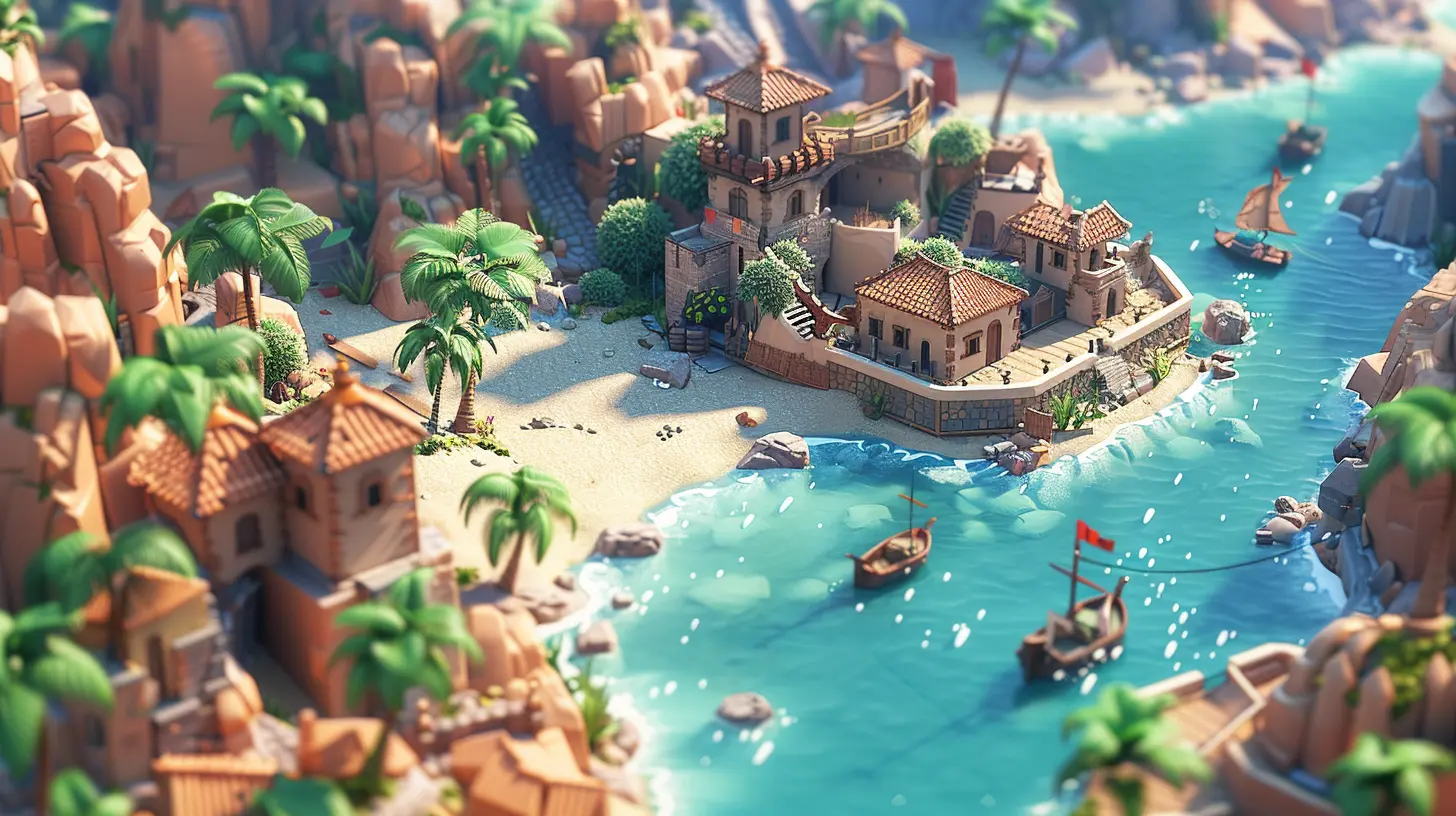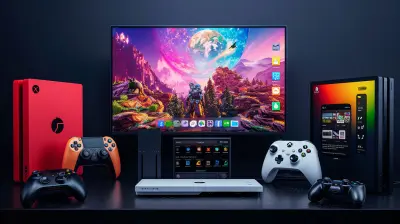How to Optimize Performance in Unity Projects
8 September 2025
Working on a Unity project is like piecing together a complex puzzle — every component can impact the final performance. Whether you're building a small mobile game or a vast 3D universe, optimization isn’t optional — it’s vital. No one wants to play a laggy game with dropped frames, jittery animations, or long loading times, right?
In this guide, we’ll break down practical and proven ways to boost performance in Unity projects. From scene management and physics tweaks to memory usage and rendering tips, I’ll walk you through the key aspects without the boring tech jargon. Let’s get your game buttery smooth!
🚀 Why Optimization in Unity Even Matters
Before diving head-first into the nitty-gritty, let's talk about the “why.” You might ask — “My game runs fine on my PC, so do I even need to optimize it?” Short answer? Yes. Long one? Absolutely yes.Unity powers games across platforms: PC, console, mobile, VR, and even web. What flies on your high-end desktop might crash and burn on a mid-range smartphone. Optimizing ensures your game is enjoyable for all players, not just the ones with beast rigs. Plus, smoother games retain users longer. No one rage quits a game that runs well.
🧠 Start Smart: Planning for Performance
Optimization starts way before you even press "Play" in Unity. It begins with planning your project structure smartly.Keep It Modular
Use Unity’s prefab system religiously. Breaking things down into reusable components (prefabs) keeps your project clean and helps Unity manage memory better. Also, it’s easier to fix and optimize individual modules than a tangled mess.Use Object Pooling from the Start
Object pooling is your best friend. Constantly instantiating and destroying objects (like bullets or enemies) hurts performance. Pooling reuses objects and significantly reduces CPU workload — like recycling instead of re-buying every item.
🎮 Optimize Scenes Like a Boss
Your scene setup can make or break performance.Avoid Huge Scenes
Large open-world scenes with hundreds of objects? That’s a recipe for frame drops. Unity loads everything in the scene by default, so break down big scenes into smaller chunks using additive scene loading.You can load only the areas within player’s proximity and unload the rest, kind of like turning off lights in rooms you’re not using.
Bake Your Lighting (Seriously)
Real-time lighting looks gorgeous — and eats performance for breakfast. Instead, bake lighting where possible. Unity’s baked GI (Global Illumination) is perfect for static environments.If you need dynamic lighting, mix and match using baked lightmaps and real-time lights. Shadow quality also heavily impacts performance, so reduce shadow distance or resolution where appropriate.
🪄 Optimize GameObjects and Components
Yes, every GameObject matters. If you’re not careful, even an innocent-looking cube can become a performance hog.Minimize Update() Calls
Unity checks Update() functions every frame — if you have thousands of active scripts running Update(), that adds up fast. Only use Update() when needed.Instead, consider:
- Coroutines for timed logic
- InvokeRepeating() for periodic tasks
- Event-based logic to decouple and optimize object behavior
Disable Unused Scripts or Components
Got components that aren't in use? Disable or remove them. Unity still processes them otherwise. Keep your GameObjects lean and efficient.🧮 Handle Physics the Smart Way
Unity’s physics engine can be heavy, especially if abused. Want your game to stop jittering and chugging? Let’s fix your physics setup.Reduce Fixed Timestep
Go to Edit > Project Settings > Time and reduce Fixed Timestep (default is 0.02). Lower values mean Unity processes physics more frequently — more accuracy but less performance. Find a sweet spot for your game.Use Colliders Wisely
Box colliders are cheaper than mesh colliders. Use the simplest collider shape that gets the job done. Also, don’t check the “Convex” box unless you absolutely need it — it’s more expensive computationally.Layer-Based Collision
Use Layer Collision Matrix to disable unnecessary collision checks between certain layers. Why make bullets check for collisions with UI elements?🧰 Crunching Numbers: Memory Management
Memory leaks and inefficient memory usage are silent killers. You won’t notice them until your game randomly crashes or freezes on mobile.Avoid Garbage Collection Spikes
Repeatedly instantiating and destroying objects leads to memory spikes. Instead:- Use object pooling
- Avoid creating new strings or lists excessively during runtime
- Cache components (like `GetComponent
Garbage Collection (GC) happens automatically, but you can reduce how often Unity needs to clean up memory by being smart about allocations.
Texture Compression and Resolution
Textures eat RAM like kids eat candy. Use compressed formats like DXT1, DXT5, or ETC for mobile. Also, downscale textures that don’t need 4K resolution — your UI button doesn’t need to be ultra-HD.📦 Optimize Assets and Resources
Big textures, high-poly models, and uncompressed audio can bottleneck your game. It’s like trying to run a marathon in jeans and boots.Streamline Models and Meshes
Don’t import 500k-poly models when a 5k version looks just as good. Use LOD (Level of Detail) to swap in simpler versions of your models when they're far from the camera.Compress Audio
Audio files should be compressed using formats like MP3 or Ogg Vorbis. Also, set clips to stream from disk when they’re large (like background music) instead of loading them into RAM.Asset Bundles and Addressables
Use Addressables to load assets dynamically. Instead of packing everything into the scene, load them when needed. It’s like only downloading Netflix episodes you plan to watch.🖼️ Rendering & Graphics Optimization
Rendering is usually the heaviest task for your GPU. Get this part right, and you’re golden.Use Static Batching and Dynamic Batching
Unity can batch draw calls to reduce CPU overhead. Mark non-moving objects as Static, and for similar moving ones, use Dynamic Batching (for small meshes).Cut Down Draw Calls
Each material or shader can generate a draw call. Simplify materials. Use Texture Atlases to pack multiple textures into one and reduce draw calls drastically.Optimize the Camera
Limit the camera’s Far Clip Plane — Unity still renders objects way off in the distance if you let it. Also, be smart with camera effects. Bloom, depth of field, and motion blur can look pretty but are GPU-heavy.🛠️ Use Unity Profiling Tools
Guessing is bad. Measuring is better. Unity gives you several tools to pinpoint performance issues.Unity Profiler
Use the built-in Profiler (Window > Analysis > Profiler) to check CPU, GPU, memory, rendering, and physics overhead. Look for spikes and dig into what's causing them.Frame Debugger
Want to understand why your frame rate dipped? The Frame Debugger reveals how Unity renders each frame. It’s like looking into an X-ray of your rendering pipeline.Deep Profiling & Custom Profiling
Enable Deep Profiling when needed (don’t leave it always on — it slows performance). You can also use `Profiler.BeginSample()` in your scripts to manually profile specific functions.📱 Platform-Specific Optimization Tips
Optimizing for desktop? Great. But mobile? Entirely different ballgame.Mobile Optimization
- Use lower-resolution textures and compressed assets.- Reduce real-time lighting and shadows.
- Limit particle effects, expensive shaders, and post-processing.
- Profile on actual devices — not just the Unity Editor.
VR Optimization Tips
- Maintain high frame rates (usually 72–90 FPS or more).- Use Single-Pass Instanced Rendering.
- Optimize shaders heavily; everything looks bigger in VR!
🧹 Final Cleanup: Build Settings & Misc
When you’re ready to ship…Strip Unused Code and Assets
Unity can sometimes include unused stuff in your final build. Use tools like Build Report Inspector to analyze build content and remove what's not needed.Set Proper Quality Settings
Configure your Quality Settings for each platform. Turn off unnecessary effects, reduce anti-aliasing, and tweak resolution scaling.Optimize Player Settings
In Player Settings:- Enable IL2CPP over Mono for performance
- Enable Script Call Optimization to Fast But No Exceptions
- Use the most efficient API and graphics backend for the target platform
🧠 Optimization is Never "One and Done"
Here’s the truth: optimization isn’t a checkbox — it’s a mindset. You’ll find yourself going back and forth, testing, profiling, and tweaking, especially as your project grows.But don’t stress. Start optimizing early, keep things modular, and always test on target devices. Your players might not notice all the work you did behind the scenes — but they’ll definitely feel it when the game runs like a dream.
👋 Final Thoughts
So, that's the scoop on how to optimize performance in Unity projects. Follow these principles, and you’ll shave off loading times, boost frame rates, and create a far better experience for your players. Keep practicing, keep profiling, and trust me — your future self (and your players) will thank you.all images in this post were generated using AI tools
Category:
Unity GamesAuthor:

Tayla Warner
Discussion
rate this article
1 comments
Evelyn McKibben
This article provides essential strategies for enhancing performance in Unity projects. By focusing on asset management, efficient coding practices, and leveraging Unity's built-in profiling tools, developers can significantly improve game efficiency. Implementing these tips will not only reduce lag but also elevate the player experience.
September 11, 2025 at 4:37 AM

Tayla Warner
Thank you for your insightful comment! I'm glad you found the strategies useful for improving performance in Unity projects. Your emphasis on asset management and efficient coding is spot on!


